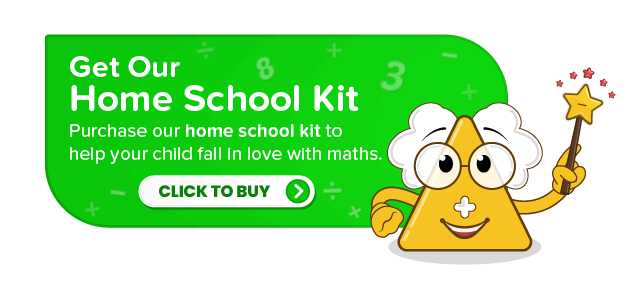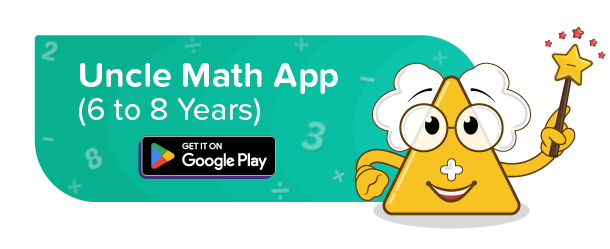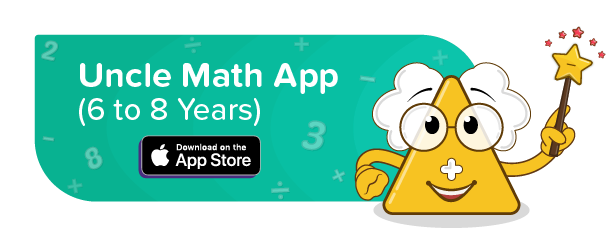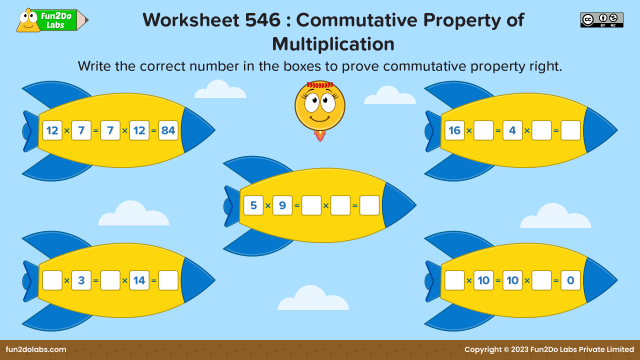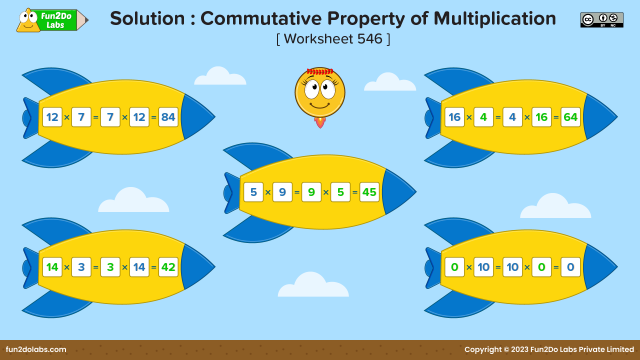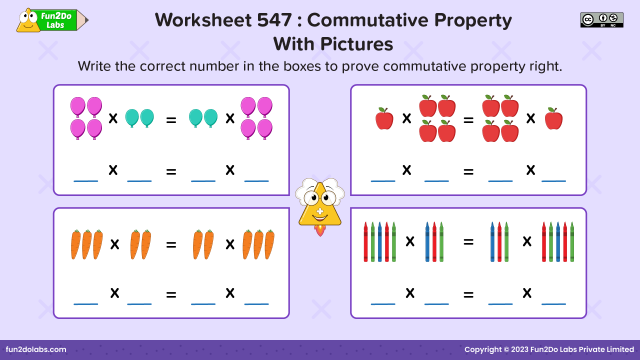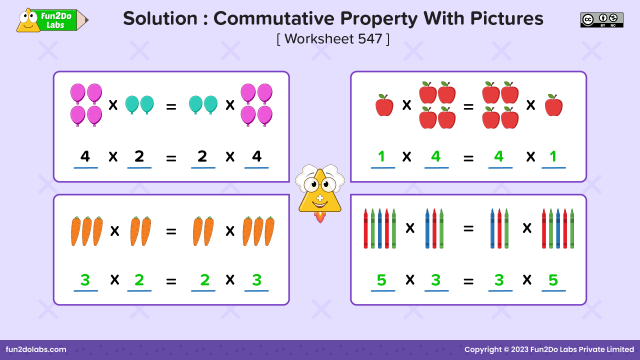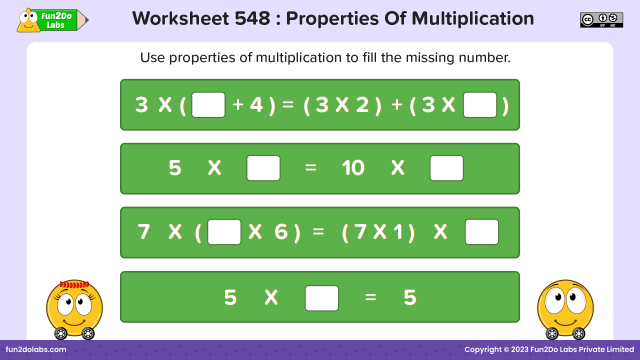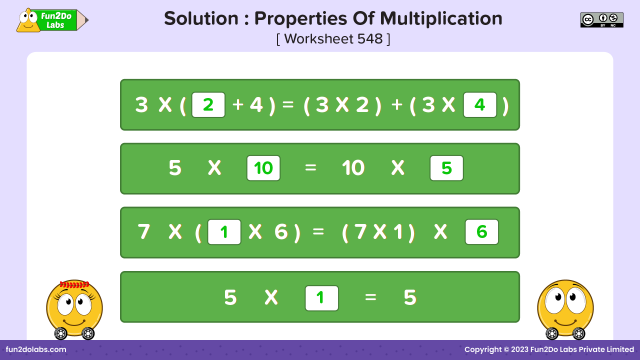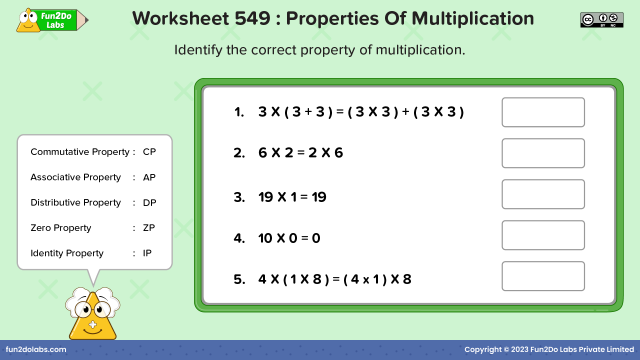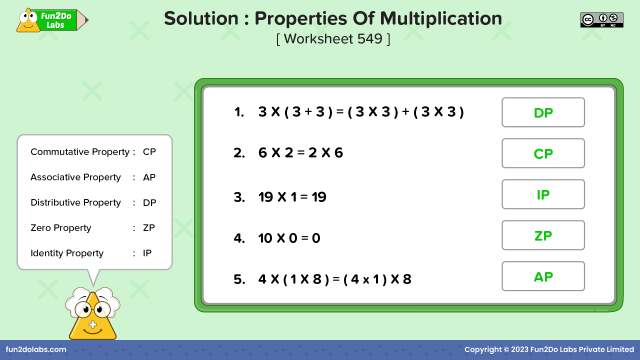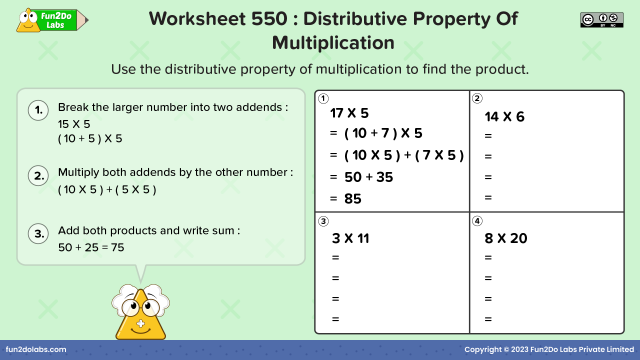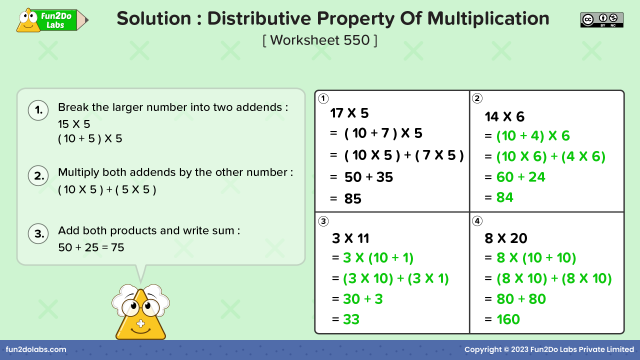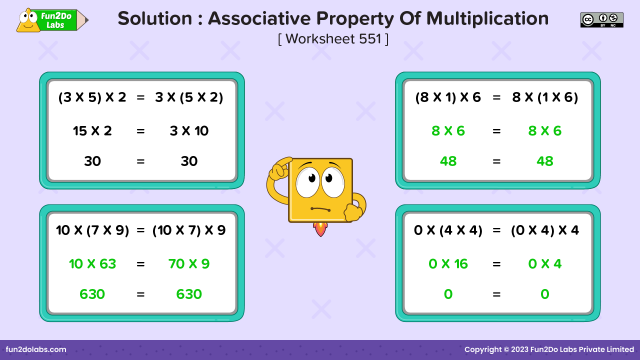
Learning about multiplication and its special properties is really important in primary school math. Knowing these properties will help kids become better at solving math problems and understanding how numbers work.
Multiplication is the process of combining equal groups or sets to find the total. Multiplication can be demonstrated visually by using counting objects or using manipulatives.
This teaching guide is mainly designed for children aged 6 to 8 years. To learn the properties of multiplication, the child must have a basic knowledge of multiplication. By the end of this guide, kids will be able to recognise and apply the properties of multiplication to mathematical problems.
There are 5 basic properties of multiplication :
- Commutative property
- Associative property
- Distributive property
- Identity property
- Zero propety
1. Commutative Property of Multiplication
The commutative property of multiplication states that a change in order of numbers to multiply will not change the product. Even if the order of multiplying numbers is changed, the result remains the same.
A x B = B x A
5 x 3 = 3 x 5 = 15
Use visual aids to show the equality of the products.
2. Associative Property of Multiplication
The associative property of multiplication states that the product of the multiplication of 3 numbers does not change by changing the grouping or association of the numbers.
A x ( B x C ) = ( A x B ) x C
2 x (3 x 5 ) = ( 2 x 3 ) x 5 = 30
Use number sentences and visual aids to help children understand this property.
3. Distributive Property of Multiplication
The distributive property of multiplication states that multiplication can be distributed over subtraction or addition of the numbers. It is generally used for fast and easier multiplications.
The distributive property of multiplication states that when a number is multiplied by the sum of two other numbers, the product is always equal to the sum of the products of an individual addend ( number to be added ) by the number.
A x ( B + C ) = ( A x B ) + ( A x C )
2 x ( 10 + 5 ) = 2 x 10 + 2 x 5
Use concrete examples and visual representations to demonstrate this property.
4. Zero Property of Multiplication
Zero Property of Multiplication states that when any number is multiplied by 0 the product is always zero (0).
A x 0 = 0 or 5 x 0 = 0
Explain this property through various examples and encourage kids to come up with their own examples.
5. Identity Property of Multiplication
Multiplicative Identity states that when a number is multiplied to 1 the answer is the number itself. It will not change the identity of the number.
A x 1 = A or 5 x 1 = 5
Use visual representations and numerical examples to illustrate this property.
Connect the concept of multiplication to real-life situations to make it more relatable. For instance, discuss scenarios where multiplication is useful, such as calculating the total number of objects in equal rows or determining the cost of multiple items.
Regular practise and reinforcement of the above properties of multiplication will enhance kids’ mathematical skills and further help them speed up their calculations.
Teaching properties of multiplication with kid-friendly, clear, and easy-to-understand posters from Uncle Math School by Fun2Do Labs :
Ignite kids’ curiosity with engaging stories for role play and skits, making the learning of this concept an exciting and effective experience. Teaching properties of multiplication through stories from Uncle Math School by Fun2Do Labs :
Learning properties of multiplication can be made enjoyable by incorporating interactive games and activities.
Kids love playing with fun stickers. This activity is very good to teach different properties of multiplication. Here, the example of commutative property is shown. This activity can be performed in the following way :
- Distribute star stickers and sheets of paper to the kids.
- For explaining commutative property by the example 2 x 3 = 3 x 2 = 6 instruct kids to draw 2 big squares on the paper.
- Divide first square into 2 columns and the other square into 3 columns.
- Instruct kids to put 3 star stickers in each column in the first square showing 2 x 3.
- Similarly, instruct to put 2 star stickers in each column of the second square showing 3 x 2.
- Allow kids to count total stars in both the squares which proves 2 x 3 = 3 x2 = 6.
Help your kids practise properties of multiplication with interesting and engaging fun worksheets and solutions from Uncle Math by Fun2Do Labs.


